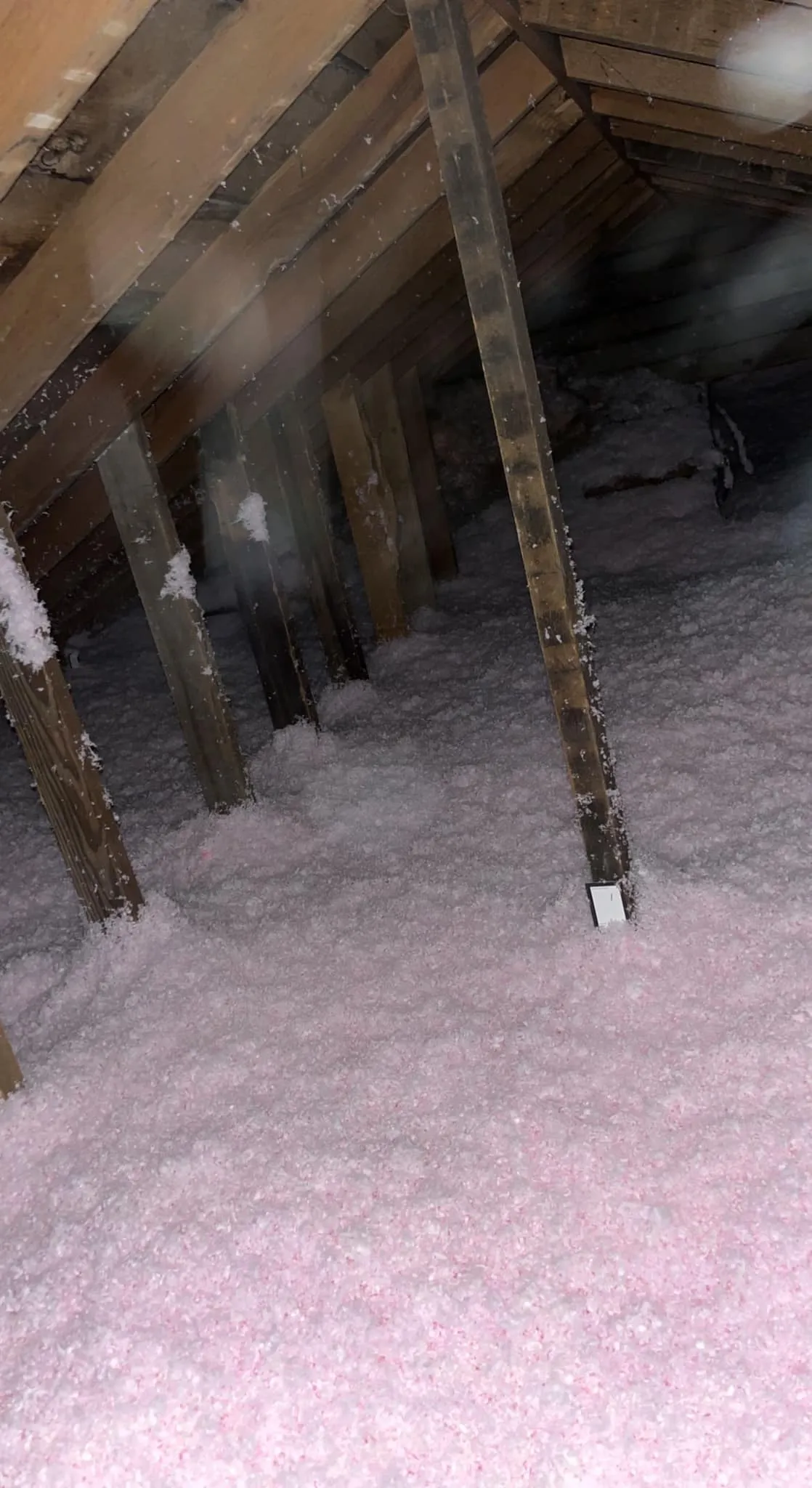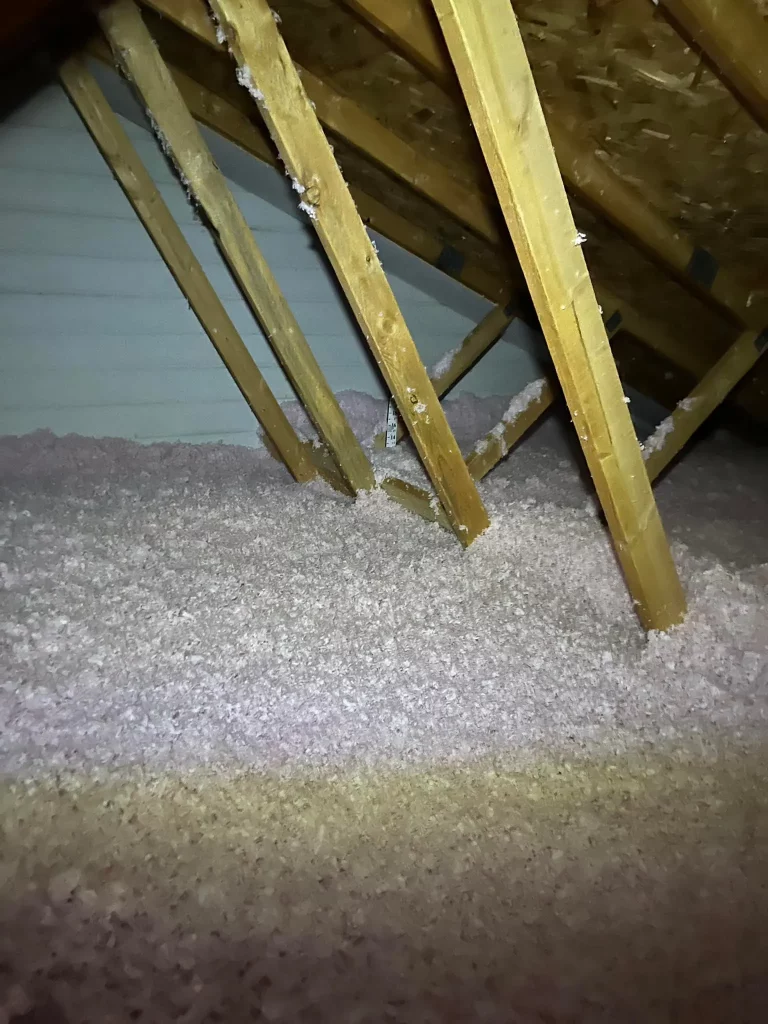
Yes, homeowners can add new insulation over existing insulation in most cases. This approach works well for attics, walls, and floors where the current layer remains intact and undisturbed. Building codes and energy experts often support this method to boost thermal performance without full removal. However, success depends on the type of existing material, home structure, and local conditions.
This guide breaks down the process, risks, and key factors. Readers will find practical steps, data-backed insights, and real-world advice drawn from handling insulation upgrades in varied climates. High Country Solutions bases this information on projects completed in cold, high-elevation areas where energy efficiency matters most. To determine if overlaying suits your setup, first identify the types of existing insulation.
Homes built before the 1980s often have older insulation like cellulose, fiberglass batts, or even vermiculite, which may contain asbestos. Newer setups use blown-in foam or rigid boards. Identify the current type first through visual inspection or professional assessment. Fiberglass and cellulose handle overlays best since they compress less under added weight.
Rigid foam boards resist settling but create air gaps if not sealed properly. A report from the U.S. Department of Energy outlines common materials and their R-values, which measure resistance to heat flow. Older insulation might offer only R-11 per inch, while modern options reach R-20 or higher.
Adding new insulation cuts energy bills by sealing gaps and increasing overall R-value. In cold regions, this reduces heat loss through the roof by up to 25%, according to data from the Oak Ridge National Laboratory. Homeowners notice fewer drafts and stable indoor temperatures.
Layering also avoids the mess and cost of removal. Blown-in materials like cellulose expand to fill voids around existing batts, improving coverage. Market trends show U.S. households spending $1,500 on average for attic retrofits, with payback in 3-5 years through lower utility costs, per a 2022 analysis by the Home Energy Magazine.
Not all setups suit overlays. Moisture buildup happens if vapor barriers clash, leading to mold in humid areas. Overloading attics with heavy wet cellulose risks structural strain on rafters.
Use a table to compare risks by insulation type:
| Insulation Type | Overlay Compatibility | Main Risk | Mitigation Step |
|---|---|---|---|
| Fiberglass Batts | High | Dust irritation during install | Wear masks; ventilate space |
| Blown-in Cellulose | Medium | Moisture retention | Add vapor retarder if needed |
| Rigid Foam | Low | Thermal bridging at seams | Seal joints with foam adhesive |
| Vermiculite (possible asbestos) | None | Health hazard | Test and remove professionally |
This comparison draws from guidelines in the International Residential Code. Always test for settling or damage before adding layers.
Start with safety. Turn off power to the area and wear protective gear. Clean the space to remove debris that blocks even coverage.
In practice, pros often use rented blowers for even distribution. This method saved one project from uneven spots that plague DIY efforts.
Assess the home’s age and construction. Older roofs might need reinforcement if adding dense material. Check for pests or rot beneath existing insulation, as new layers can trap issues.
Budget plays a role; materials cost $0.50 to $2 per square foot, but labor adds up in tight spaces. Energy audits reveal weak points—data from the Environmental Protection Agency shows audits identify 20% more savings opportunities.
Local codes vary; some require permits for major changes. Factor in climate—high winds in mountainous areas demand secure installation to resist shifting.
Before proceeding, test attic ventilation first. Poor airflow causes ice dams in winter; add ridge vents if needed to keep efficiency gains intact.
In areas like Wyoming with sub-zero winters and dry air, layering insulation shines. Snow loads amplify heat loss, so prioritize high R-value materials like rock wool, which resists fire and sound.
Homes here often face freeze-thaw cycles that crack unsealed joints. Use closed-cell spray foam for walls to block wind infiltration, common in high country winds up to 50 mph. A study by the National Renewable Energy Laboratory notes 15-30% energy savings in retrofitted mountain homes.
Keep elevation in mind; thinner air at 7,000 feet means less oxygen for combustion appliances—ensure insulation doesn’t block vents.

Many wonder about DIY versus pro help. DIY suits simple attics but pros handle codes and safety in complex setups.
Cost questions arise too. Expect $1,000-$3,000 for a 1,000 sq ft attic, varying by material.
For the best timing, schedule in fall; milder weather eases access before heating season ramps up.
Most warranties stay intact if work follows manufacturer’s guidelines. Check with your builder, but professional installs rarely trigger issues. Poor DIY jobs, though, might lead to denied claims for related damage.
Probe with a stick or hire an infrared scan. Settlement drops R-value by 20% over time, per U.S. Department of Energy data. Uneven depth signals the need for top-up.
Yes, but space limits options. Use rigid foam boards cut to fit between rafters, ensuring 1-2 inches of air space for ventilation. This prevents condensation in sloped roofs.
Avoid covering it; outdated wiring overheats under insulation. Upgrade to modern circuits first to prevent fire risks.
Blown-in fills gaps more effectively, raising efficiency by 10-15%. Batts work but require precise fitting to avoid voids.
Layering new insulation over old boosts comfort and saves energy when done right. Key points include matching materials, checking for hazards, and considering local weather. Evaluate your home’s setup against these factors, weigh costs versus benefits, and align with long-term efficiency goals.
Homeowners ready to improve insulation should start with an assessment. Contact High Country Solutions at (307) 248-9063 or email [email protected] for guidance on local options. This step ensures choices fit specific needs without guesswork.